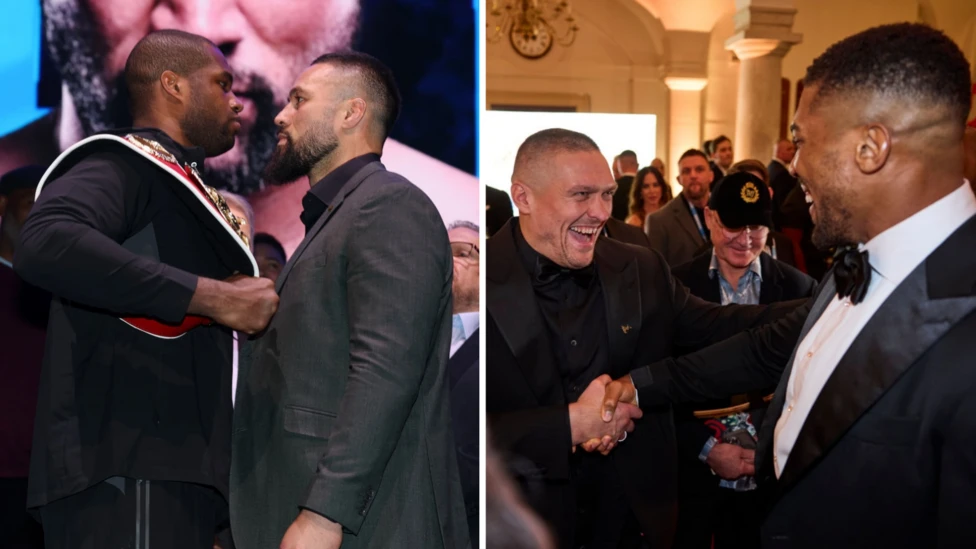"I had big 'why not' energy": The workers sliding into recruiters' DMs
Some job applicants submit their CVs and cross their fingers. Others boldly go right to the source – and it's paying off.

Before copywriter and creative director Sarah Jenkins went freelance, she spent three years at a small advertising agency – one she courted via "a combo of DM-slide and cold email".
After admiring the agency's work from afar, she messaged the creative director, a casual acquaintance, on Facebook. After the director responded positively, 40-year-old Jenkins, based in Missouri, US, emailed the founder and CEO the same day.
She met with the CEO the following week and landed a senior copywriter position soon after, thanks to her years of experience working for a larger agency. Jenkins, pictured above, says, "They weren't technically hiring for anything that fit my skills at that time. But I had big 'why not' energy."
Many applicants are getting bolder, skirting old-school hiring practices, and going straight to the source. It's an increasingly common strategy that's helping some workers of all stripes – especially young ones – land coveted roles.
'Reaching out and touching someone'
Gina Nichols, a senior business recruiter at US-based recruiting agency Hirefor, says the rising phenomenon is primarily the result of access.
"Where older generations didn't have access to social media, younger generations have all sorts of digital tools," says Nichols. "Now we post a job, and you have hundreds of applicants in a matter of hours. So, to differentiate yourself from being lost in a mass like that, reaching out and touching someone – which you have the capability to do on multiple platforms – is a smart move."
The phenomenon is a natural result of the perceived instant gratification that comes with social media, says Akhila Satish, the CEO of US-based talent-management firm Meseekna. "I think we're in a world where a lot of things are moving faster," she says. "And I think [the hiring process] in general is one of those things where the pace hasn't changed that much. You still have to apply; you still have to wait to hear back."
That traditionally glacial pace might frustrate some younger applicants, who are used to making speedy connections via social media, explains Satish. That, in turn, is emboldening them to reach out via non-traditional channels to connect faster.
Jennifer Nash, an executive coach and the author of Be Human, Lead Human, says the phenomenon also connects to the changing nature of work culture, which has evolved rapidly since Covid-19. The pandemic created an "awakening around the status quo of how work got done, how people pursued positions and how employers hired for positions".
Now, she says, job seekers feel empowered to make the hiring process "more of a partnership" as opposed to a one-sided, murky ordeal. "There's this flexibility now, and this freedom to say, 'I am going to stand out in a little bit of a different way; here's how I think I can show up in my most authentic way, and contribute value to this organisation'," she says.
Culture gut check
With seemingly endless ways to connect with employers, Satish advises that job seekers – especially younger ones – gut-check the boldness of their approach before reaching out.
"I'm always encouraging of new and interesting ways to get attention as a job seeker," says Satish. "That being said, I think there's a nice balance that people can play here, where they're showcasing their skills and their knowledge with a new medium, while also appreciating the fact that they might be reaching the desk of someone who may not be as familiar with the new mediums."
Before going directly to the source, Satish recommends job seekers research company culture.
"If you're applying for a job at a young and fresh company that's small, and you can look at the people on LinkedIn – and you know that they're right around, you know, five, six, seven years older than you and they're going to understand it – absolutely put yourself out there," she says. "If you're applying to an older, more established firm, it may not play quite the same way."
When in doubt, Satish advises sticking to LinkedIn. "Connecting on LinkedIn is a relatively low-risk approach," says Satish. "I think it's something that has become a common medium across recruiting, and so people are aware of it."
To prepare for the biggest impact, Satish recommends candidates keep their LinkedIn profiles updated frequently – it shouldn't be a static document like a CV. "You want to treat your LinkedIn as a place where, regardless of whichever company looks you up, they're going to find something of interest and value," she says.
The new status quo
In Jenkins' case, the bold approach worked – along with some serendipity.
"It so happened [the agency] was also thinking about expanding creative and marketing services at the time – their primary focus had been websites – and that's my skill set," says Jenkins. "I might not have been so bold with a bigger, corporate company where I had no connection or context."
From a recruiter's perspective, Jenkins nailed the approach. Nichols explains that, in most cases, reaching out to potential employers or recruiters in a respectful way can't hurt.
"If I'm looking for a self-starter, there are a lot of good green flags that come from [taking the initiative]," she says. "If you're a smart recruiter, you build a pipeline so that you have good candidates that you're able to call on when opportunities open. So, even though I might not have something that aligns with a particular candidate's skill set, I absolutely will have a conversation with them."
As shaky economic conditions continue to impact the job market, circumventing conventional portals may be the best way to get noticed. Whether candidates are beefing up their LinkedIn profiles or sliding into a recruiter's DMs, thinking outside the cover letter can pay dividends.
-bbc







